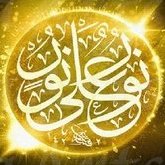Search the Community
Showing results for tags 'meditation'.
Found 2 results
-
Dear Dao Bums, Intro: I was super stoked to discover this gem of a text today: 白羽黑翮靈飛玉符 - Báiyǔ hēi hé líng fēi yù fú - White Feather Black Wings Spirit Flying Jade Talisman In short, it supposedly originates in the Southern Period of the Eastern Jin dynasty (266–420). Contents: It presents a cosmological origin story of the text, supposedly also in secret language sharing its version of the secrets of alchemy (if one can decode it). Thereafter it's very short and to the point. It presents 5 talismans, one blue, one white, one red, one black and one yellow. For each talisman it shares the secrets of its cultivation: 1) name of the spirit cultivated, 2) years of practice required, 3) where in the "heavens" you can fly to upon completing its cultivation, 4) who the "recipient" of the talisman is, 5) where to put the talisman on your body to actually start your spirit flight, 6) color of silk to write it on, size specification for the silk, and where on your body to put it when cultivating, 7) direction of the 6 Jia and 6 Ding while cultivating. My interpretation: Based on my experience with internal alchemy as taught by Master Zhongxian Wu, nearly everything in the text is in code. Unfortunately I won't say I've reached a sufficient level to be able to interpret the text with full confidence, but I have some viewpoints I'd like to share. It would also be very interesting if any of you are Chinese speakers, to hear your understanding of the original, Chinese text. Many of the details given (years of practice required, where in the heavens you can fly to, recipient of the talisman, where to put it on your body, direction of the liu ding liu jia) are very simple to decode. It simply shows the element of each talisman. E.g. blue/green is Eastern qi, related to liver and gallbladder, your left side, and when it says you'll be adorned with a "blue/green" robe, it just means the color of the qi during your visualisation and the heavenly qi you'll ascend to/connect with. Number of years is related to numeroloy, and all the numbers give away the relationships with Trigrams, Hexagrams, Heavenly and Earthly Stems, Timing of the days, Seasons of the Year, Astrology, Meridians and Organs, in short the whole symphony of Chinese qi culture. What I personally loved about it is the simplicity. Just one mantra to be said before practice, then you do the visualisation for each talisman, and you're set. It will refine your body, organ, qi, jing, qi, shen, meridians, qi field, feng shui, everything all the way up to the immortal fetus leaving your physical body to take flight and explore the cosmic qi. One talisman for each element. Further, I'm super interested in astral travel, and this text alludes to it in great detail - feathers, wings, take flight. Of course it could be interpreted in many ways. The talismans are all called "xxx ling fei yu fu". Then replace the xxx with: Shang (blue), xia (white), zuo (red), you (black), tai (yellow). Ling I know also means "spirit" or soul, as far as I remember "ling qi" is the chinese term for the japanese Rei Ki, meaning universal qi. Ling also means soul - if a qigong master cannot make it rain (in the old days), it's said he hasn't got "ling" or soul. There's no soul behind his mantra, mudra, talisman and dance form, hence the Gods/Heaven/Cosmic Energy don't respond to his practice. Fei can also mean lung, relating to qi in general, breath, mist, vapor. The names also seem to allude to the 3 Hun Souls, shang, you & tai (tai guang, shuang ling, you jing) It makes sense that in out of body travel, it's the Hun that travels (as one Hun has our eternal soul which reincarnates, another Hun has the soul which remember all our past lives, and last Hun our intelligence). But I don't know what "xia" and "zuo" could be. Overall each name kind of "gives away" the true alchemical purpose (xxx ling fei yu fu), to refine each of our 5 elements to the highest degree, reshape our body in the shape of the universe (astronomical constellations), get our spirits back into our body (hun soul and organ spirits), using qi (the fei part) and cultivate ling or soul. Don't know if the "yu" could refer to the OG shaman king Yu who through stepping connected with the big dipper, the seven stars, yin/yang and the 5 elements, sun/moon and the 5 planets. Maybe it means that we will also fly in the cosmic qi like he did if we do this practice. Conclusion Any Chinese speakers who would like to give their understanding of the text? Any alchemy people out there, who could point to any living tradition using this text as their alchemy guide? Link: http://www.ctcwri.idv.tw/CTCW-CMTS/CMT01洞真部/CMT0102神符類/CMT0102ALL/CNDZ010205白羽黑翮靈飛玉符.htm
-
- 1
-

-
- daoism
- astral travel
-
(and 10 more)
Tagged with:
-
PREFACE Vijnanabhairava is a very ancient book on Yoga. It closely follows the basic principles of Saivagama. It contains 112 types of yoga. There is hardly any other book on yoga which has described so many ways of approach to Central Reality that is present in each man as his essential Self. It is both extensive, and intensive in the treatment of the subject of yoga. An English translation of this excellent work is being provided for the first time. The text that has been adopted is mainly the one that is published in the Kashmir Series of Texts and Studies. At a few places, however, slightly different readings yielding better sense have been incorporated as suggested by Svami Laksmana Joo. Each verse of the Sanskrit text has been printed in both Devanigari and Roman script. This is followed by an English translation and a number of expository notes which will go a long way in elucidating the main idea of the verse. A long Introduction explaining the basic principles of the yogas described in the text has been provided in the beginning. A glossary of technical terms has also been added at the end. Since the yogas recommended in the book are based on the tenets of the non-dualistic Saiva Philosophy, the reader will do well to read the author's Introductory Portion of either the Pratyabhijnahridayam or the Siva-sutras before taking up the study of the present book. I express my sincerest gratitude to Svami Laksmana Joo who has kindly taught this book to me word by word. My thanks are also due to Shri Dinanath Ganj who has kindly helped me in the preparation of the index to important Sanskrit words and the alphabetical index to the verses. Varanasi I. VI. 79 JAIDEVA SINGH
- 2 replies
-
- meditation
- yoga
-
(and 8 more)
Tagged with:


